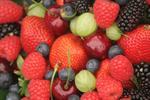Helping Older People Who Have Difficulties Eating
Oral nutritional support is the preferred treatment for patients who are malnourished/ at risk of being malnourished and are able to swallow safely. The aim of oral nutritional support is to ensure a patient consumes all the energy, protein, vitamins, minerals and fluid needed to meet their assessed requirements and help improve their clinical condition.
 Patients should, in particular, be advised to consume foods high in protein and fat as illness is often accompanied by an increased need for protein and an increased energy requirement. This requirement can be most effectively met by increasing intakes of fat which provides more calories than other nutrients and by ensuring a patient consumes suitable amounts of protein at each meal.
Patients should, in particular, be advised to consume foods high in protein and fat as illness is often accompanied by an increased need for protein and an increased energy requirement. This requirement can be most effectively met by increasing intakes of fat which provides more calories than other nutrients and by ensuring a patient consumes suitable amounts of protein at each meal.
The following advice may also help a patient to increase their oral intake:
- Eat small frequent meals and snacks that are high in energy and protein. Suitable between meal snacks include cheese and biscuits, full fat yoghurt, avocado, tuna and nuts. Many people find a little and often approach better than having a small number of large meals as a very full plate of food can be off putting.
- Add extra calories to foods by adding sugar, honey, jam and dried fruit to breakfast cereals and puddings.
- Choose easy-to-eat foods such as soft foods like mashed potato and puddings as these are easier to chew than foods such as tough meats.
- Ensure that any oral health needs are met, for example, by treating tooth decay or a sore mouth. Good dental health is essential as high levels of tooth decay and poorly fitting dentures can lead to inflammation and soreness of the mouth which will in turn reduce appetite and oral intake.
- Choose higher calorie drinks such as pure fruit juice and milk rather than water or diet drinks which are low in calories. Also add extra calories to tea and coffee for example, by adding sugar or increasing the amount of milk added, ensuring it is a full fat variety.
- Although soups made with added cream, cheese and croutons can be nourishing, be careful not to consume too many less nourishing water based soups. This is because the water content of the soup increases fullness and decreases appetite which is why people trying to lose weight are frequently recommended to consume soups to aid weight loss. It is not thought that water served with meals has the same effect, studies have indicated that consuming foods with a high water intake such as soup before a meal reduced calorie intake at the subsequent meal more significantly than drinking water with food.
- Take a short walk outside before a meal or sit by an open window as fresh air can increase appetite. Eating in the company of others for example, at a day centre or lunch club can also encourage you to eat more. Also eat more at times when appetite is at its best, for many people this is in the morning.
- Drugs to stimulate a person’s appetite may also be prescribed which can provide a stimulant to eating.
Modified consistency foods
Modified consistency foods are used to meet a patients specific requirements resulting from some degree of swallowing difficulty. These foods are either cooked until they are soft, or chopped, mashed or pureed to a required consistency. Here we shall look at different types in turn considering how foods are processed and any nutritional implications they may have.
Soft foods
A soft diet can be helpful to patients with some degree of swallowing difficulty and also those progressing from a liquids only diet following surgery. Soft foods are those which are naturally soft in texture such as bananas, melon, peaches and canned fruit, cooked and peeled vegetables including carrots and potatoes, pasta, rice and bread.
People on a soft diet may have particular difficulty with eating the following foods which should be avoided:
- Hard foods such as crusty bread, crisps and biscuits (unless dunked in a fluid until soft).
- The skins around fruit and vegetables such as on grapes and beans.
- Fibrous foods such as pineapple, runner beans and lettuce.
- Foods which have a mixed consistency such as breakfast cereal which has not been blended with milk such as cornflakes as opposed to porridge, or mixed consistency soups such as minestrone.
- Foods which crumble such as pastry crust and bread.
- Nuts and seeds and husks such as from sweet corn and granary bread.
General management tips
- Add soup, sauces gravy or broth to meat, fish and poultry to soften them.
- Eat plain yogurts rather than those with added fruit which provides a mixed consistency.
- Soften crackers, biscuits and bread with liquid e.g. dunking bread in soup and biscuits in tea and coffee.
- Choose soft cheese such as cottage cheese, cheese spread and ricotta.
- Ensure you take in adequate vitamins by choosing well cooked, skinless and mashed vegetables, cooked or canned fruit without seeds or skins or fruit blended with milk or yoghurt such as in a fruit smoothie.
Would you like to learn more about the Caring for the Elderly or Nutrition? Follow the links in the following course titles for further information:
Aged Care And Counselling
Nutritional Therapy
Human Nutrition I
Learn more. Click here to contact us.
[15/01/2025 22:41:56]